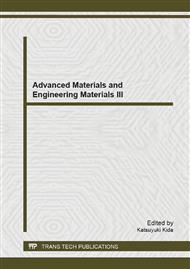p.672
p.679
p.685
p.690
p.694
p.698
p.702
p.707
p.712
Analysis of the Sustainable Construction Concept of the Vernacular Materials
Abstract:
Vernacular architecture is a term used to categorize methods of construction which use locally available resources and traditions to address local needs. This paper addresses the relation between Chinese vernacular architecture and locally sourced materials, which shows that the application of the vernacular materials is the primary component of the sustainable value of vernacular architecture. To assess the contribution of these materials for sustainability, a comparison with industrial materials at level of environmental indicators was established. This paper highlights the advantages of using local materials and techniques as a factor of local socio-economic development.
Info:
Periodical:
Pages:
694-697
Citation:
Online since:
February 2014
Authors:
Price:
Сopyright:
© 2014 Trans Tech Publications Ltd. All Rights Reserved
Share:
Citation:


